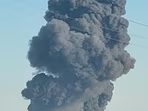Can the ‘Magic’ and ‘Angels’ that Make Long Trails Mystical for Hikers Also Conjure Solutions to Environmental Challenges?
Miles to Go: The fourth in an ongoing series Inside Climate News fellow Bing Lin is reporting from the Pacific Crest Trail in Northern California. Over the course of a 500-mile hike, the series is exploring the impacts of climate change on the trail and what outdoor recreation can teach society about sustainability, adaptation and coexistence in a warming world.
I awoke to starlight at 1:30 a.m.—so early that it was still late.
Today was the day. I was on the last stretch of my 500-mile jaunt on the Pacific Crest Trail, which itself was the final leg of my 2,650-mile hike from Mexico to Canada. Nine more miles to the top of Mount Whitney was now all that stood between me and a feast of mixed nuts, mozzarella cheese and recollections of my favorite miles and moments on the trail. I brushed my teeth, packed up and hiked out.
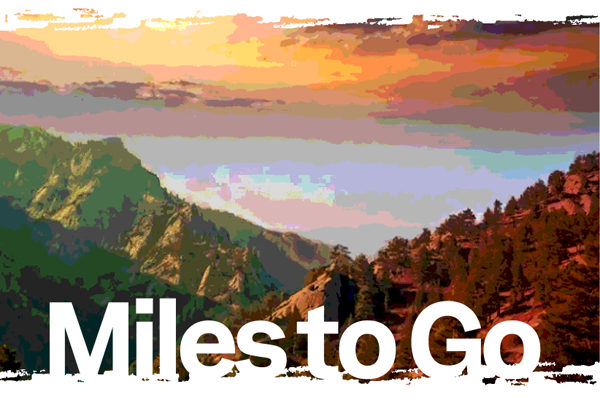
With the sun set to rise at 6:07 a.m., I hustled through the hush of the night and soon saw a sea of headlamps bobbing up and down on mountain switchbacks in the distance. All the others with my sunrise-at-the-summit itinerary presumably had been prudent enough to camp at Guitar Lake, by the base of Mount Whitney’s west side ascent route, and hadn’t needed to hike in from the PCT. The lights looked impossibly high up and far away.
Six hours later, and fully two after sunrise, I trudged to the highest point in the lower 48 states and let out a meek “yay.” I was way behind schedule and knackered. Just as in the rest of the Sierras, the climb had kicked my butt and made me question all my life decisions. Only after a shameful amount of sustenance and sunlight at the summit did these decisions start to feel vindicated.
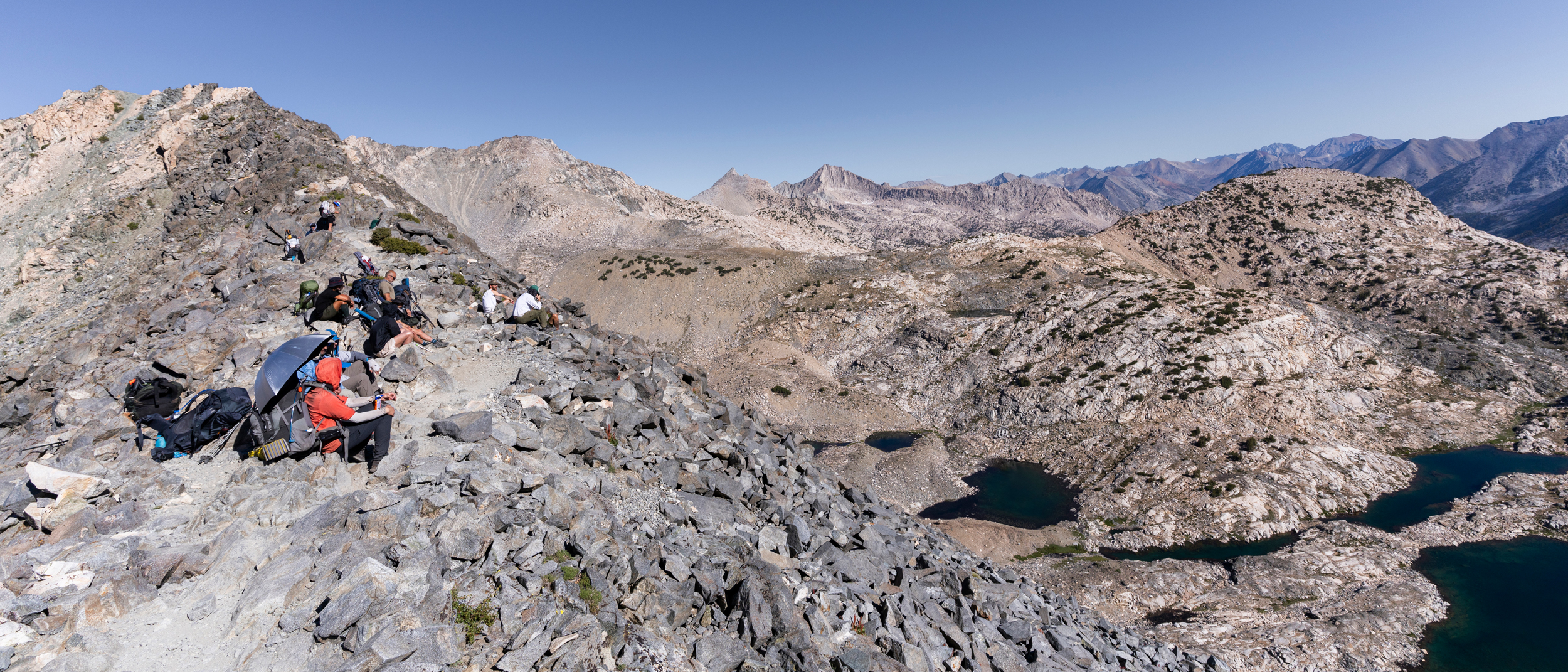
Trail Magic
The trail can often feel torturous.
So why hike? Why do so many subject themselves to dirt, debt, danger and thousands of miles and mosquito bites to get outside?
For one, truisms about the rewards of immersion in nature are, unsurprisingly, true.
“In every walk with nature one receives far more than he seeks,” said John Muir and every other fridge magnet.
Of course, outdoor recreation also confers a host of scientifically backed boons to one’s psychological, physiological and physical well-being, even if these aren’t apparent or appreciated in the moment.
“Hiking these long distance trails just really restores your faith in humanity,” said Kristi McLeod, a professor and department chair of sociology and anthropology at Marshall University who studies why folks who go outside, stay outside.
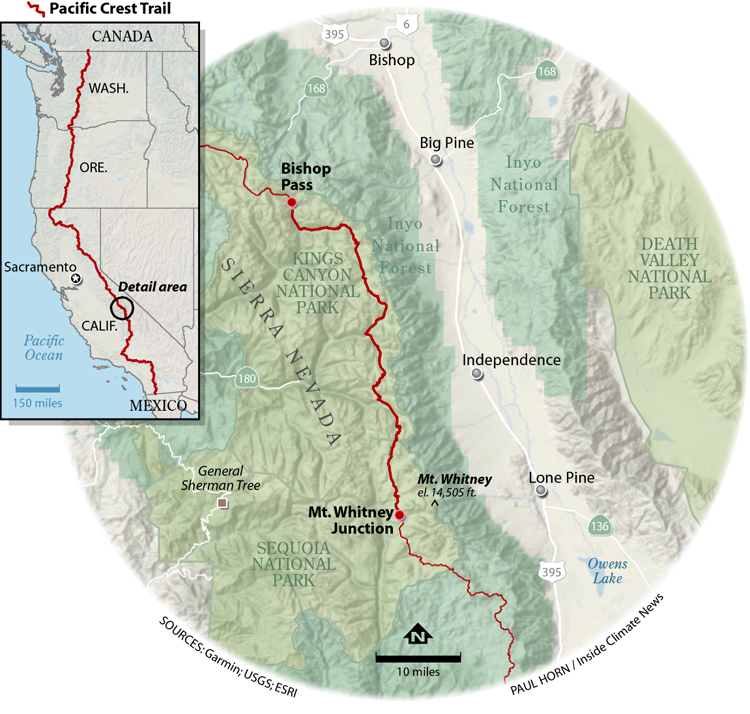
McLeod’s research investigates the many forms of kindness that are bestowed on travelers by random strangers, known in the hiking world as “trail angels,” including on the Shikoku Pilgrimage in Japan, the Camino de Santiago in Europe and certainly on the Pacific Crest Trail and other long-distance pathways all across the country.
These forms of unconditional hospitality and unexpected kindness are a tradition, and situations where a hiker’s desperate needs are resolved out of the blue are ubiquitous enough to warrant a name: “trail magic.”
Explore the latest news about what’s at stake for the climate during this election season.
Trail magic can range from the seemingly mundane, like an extra bit of water a stranger gives to a dehydrated hiker, to the truly spectacular, such as the invitation to a mountain mansion in Idyllwild for a hand-made gourmet four-course dinner and free laundry, loaner clothes and lodging for the night. It all feels magical when you are deprived and disheveled.
At Sonora Pass, a Danish couple and I stumbled upon a morning cook-out in the parking lot, laid out just for us. David and Jennifer Carr had driven 600 miles from Provo, Utah, and arrived at midnight the night before just to spend the day being trail angels for hikers.
“Hundred hamburgers, hundred hotdogs, 10 dozen eggs, 10 cases of drinks,” said David Carr, listing on his fingers the contents of his portable pantry. He forgot to mention the abundant sweet treats, sumptuous fruits, fresh vegetables and assorted snacks also out for the taking. Between my bites of the most delicious cheese and mushroom omelet, they confided that they footed a $1,500 Costco bill to make this magic happen for us.
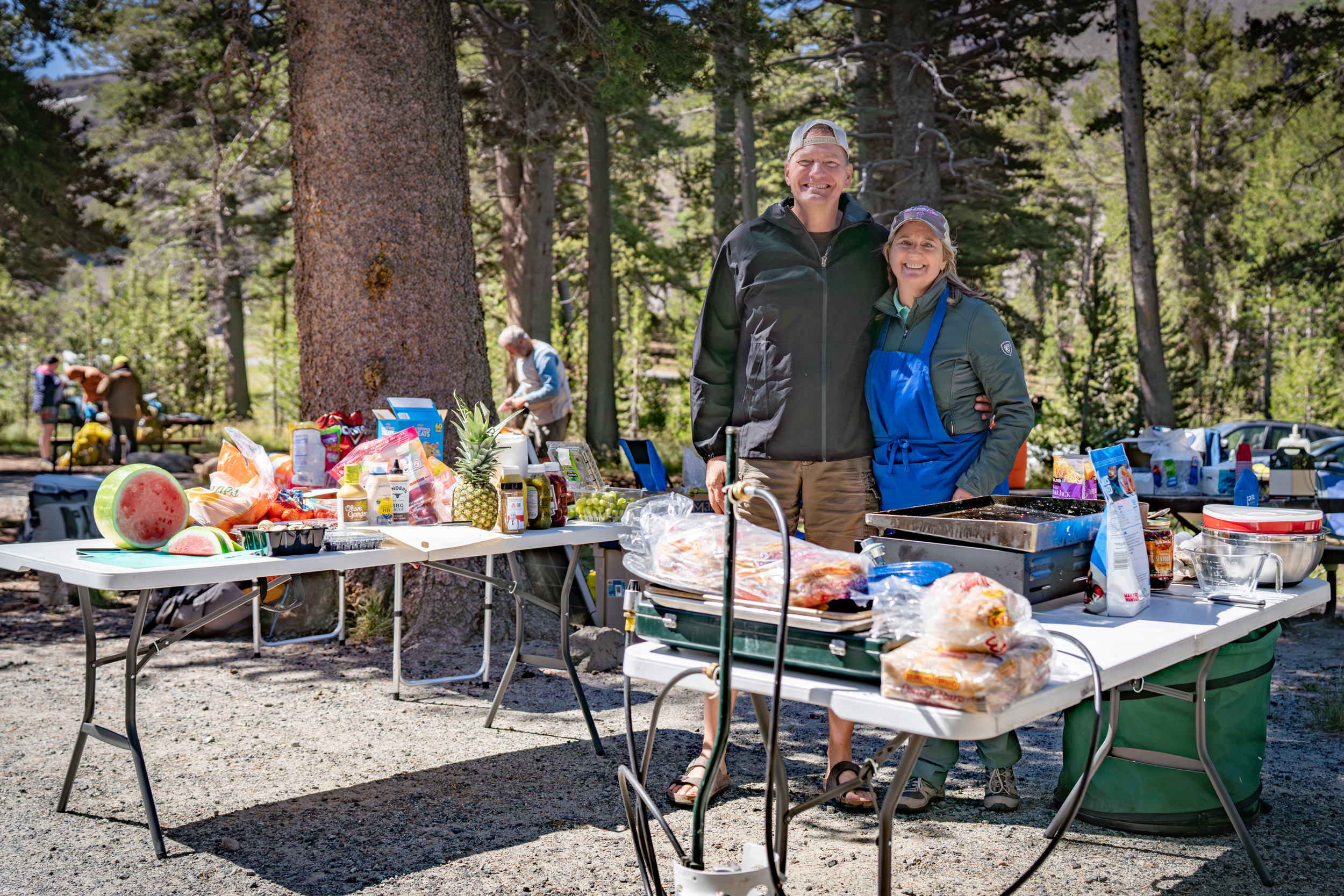
Such extravagantly gracious acts of generosity on the trail are hardly isolated instances.
Few names, for instance, carry as much cachet on the Pacific Crest Trail as “Scout” and “Frodo.” Barney “Scout” Mann, and his wife, Sandy “Frodo” Mann, have been hosting hikers embarking on the Pacific Crest Trail at their home in San Diego since 2006. Over the course of 17 backpacking seasons, the Manns housed, fed and shuttled thousands of PCT thru-hikers to the trail before they finally shuttered their operations for good earlier this year.
“A total of 8,023 hikers,” said Scout. “Wonderfully crazy. If you told me that in 2006 when we hosted our first hiker, I might’ve run screaming down the street.”
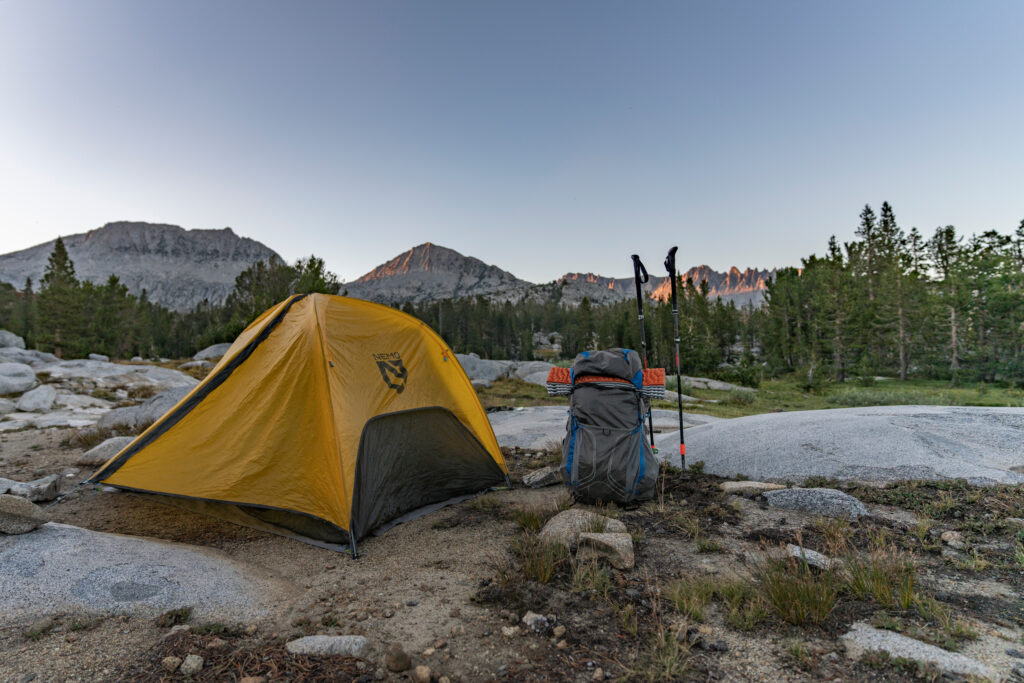
Scout and Frodo, like the Carrs and other trail angels, don’t expect or accept any payments for their kindness. “Though if people bring us chocolate, it’s all good,” Scout said.
“It’s just a wonderful positive feedback loop,” he added. “I like to say that we’re releasing this insidious wave of kindness into the world. And if anything, these days, we need more of that.”
In addition to trail angeling, Scout is also an avid hiker, outdoor advocate and author. I listened to, and resonated with, his latest book, “Journeys North: The Pacific Crest Trail,” while hiking. Using one of my 160-character message allotments on my GPS satellite communicator, I texted him: “This is Bing (Sharkbait). Finished Journeys North in a day. Tantalizingly intimate, vigorously researched, and wholly human. Loved it!”
I probed Scout about the future of our national trails, given that his many hats over the years have also included stints as president of the Partnership for the National Trails System as well as board chairman for the Pacific Crest Trail Association.
“Trails don’t disappear in a generation, they disappear overnight,” said Scout.
There are no secrets or shortcuts behind the magic of how long-distance hiking trails are agonizingly maintained. Just on the PCT, so much work goes into keeping this continuous path open, including thousands of volunteer hours each year to supplement the work of professional trail crews and facility caretakers.
I passed a trio of Forest Service rangers—hoes, shears and machetes in tow—a little south of Silver Pass. After they checked my hiking permit, I learned that they were out and about for trail maintenance.
“You’ll see some of our work down trail,” said Luke Baybutt, one of the three rangers. “We’re diverting a whole lot of water [away from the trail]. Not our best work, but …” A few minutes later, I saw a redirected rivulet that had been soaking the trail, along with several strategically strewn branches in the mud. Maybe not their best work, I agreed, but it certainly did the trick.
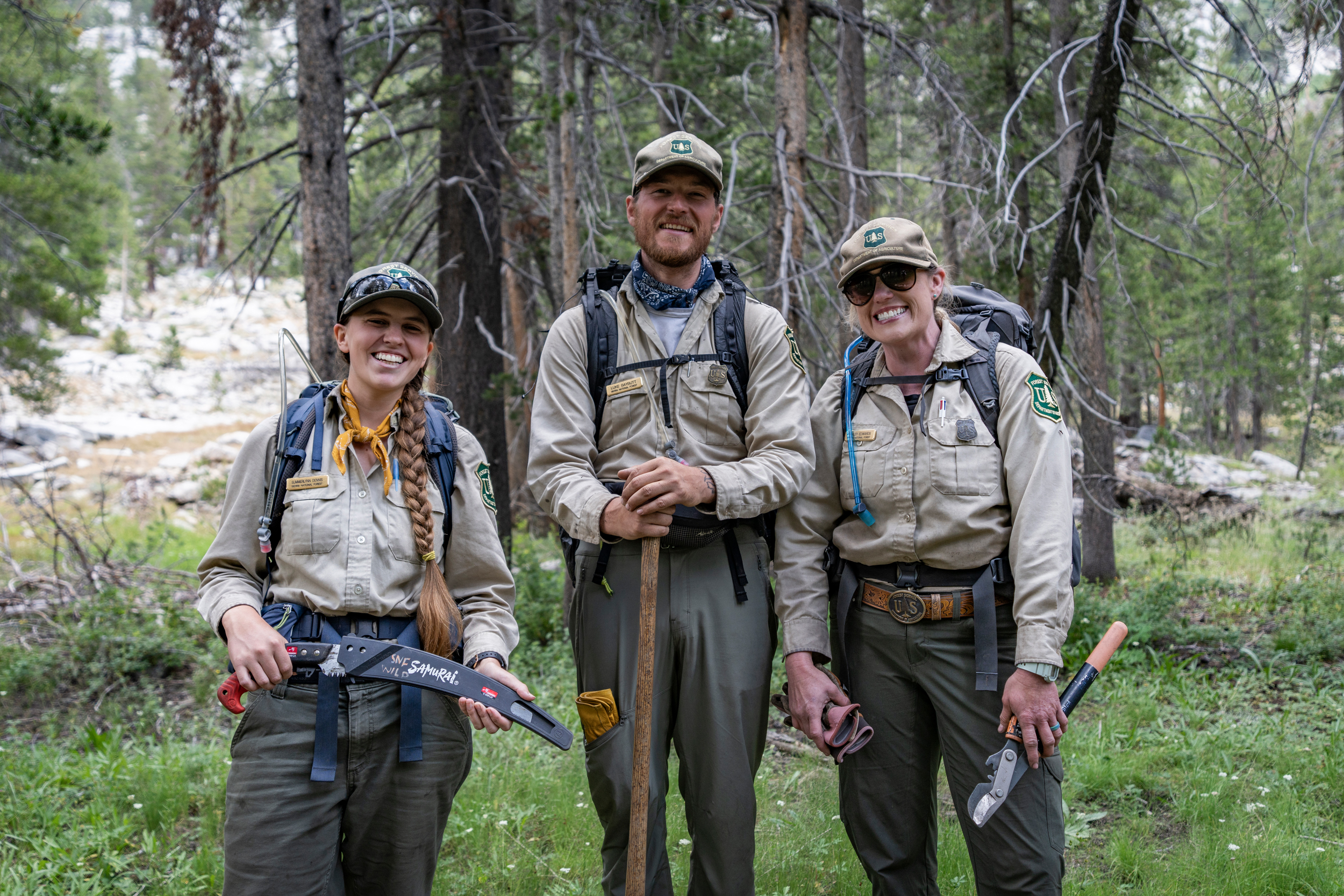
As the agency that both permits logging on millions of acres of the nation’s forests and sets aside even more forested tracts as off limits to the timber industry, the Forest Service often draws the ire of both loggers and environmentalists. Nevertheless, the service operates far beyond its size. Its 30,000-employee workforce amounts to less than half of the staff at Atlanta’s Hartsfield-Jackson international airport, yet somehow manages 8.5 percent of the nation’s land area. It’s hard not to cut the agency some slack, and even admire the rangers who put so much into maintaining the trail and preserving its forested environments.
A Wildlife Triangle
“When you protect the trail, you don’t just protect this yardstick-wide path,” said Scout. “We protect corridors for wildlife.”
Indeed, hikers are far from the only forms of fauna that rely on the trail.
The creation of trail systems often involves land negotiations spanning entire viewsheds and watersheds. This provides inroads for conversations about conservation of both public and private lands that might have otherwise been repurposed for other, more intrusive, human uses.
There is even research showing that the Pacific Crest Trail and other long-distance hiking trails provide special value as wildlife corridors that help connect habitats for a wide range of animals and plants.
“Climate is expected to move plants and animals vaguely poleward and/or upslope,” said Sean Parks, a research ecologist at the Rocky Mountain Research Station in Montana. “[But] the rate at which climate is changing is faster than the rate at which many species can actually move or shift their ranges.”
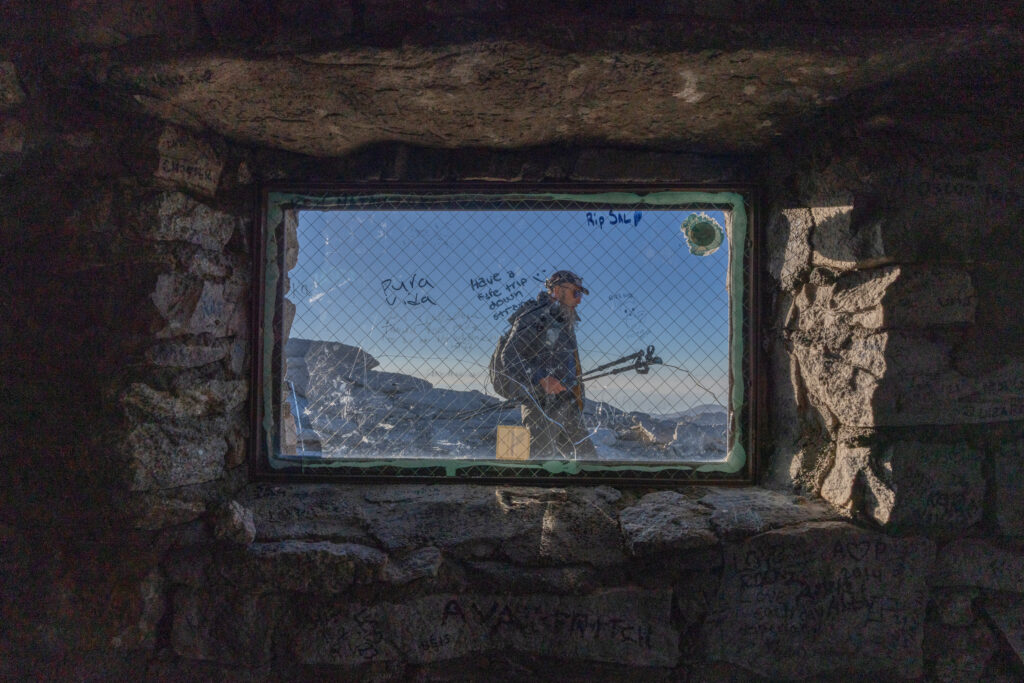
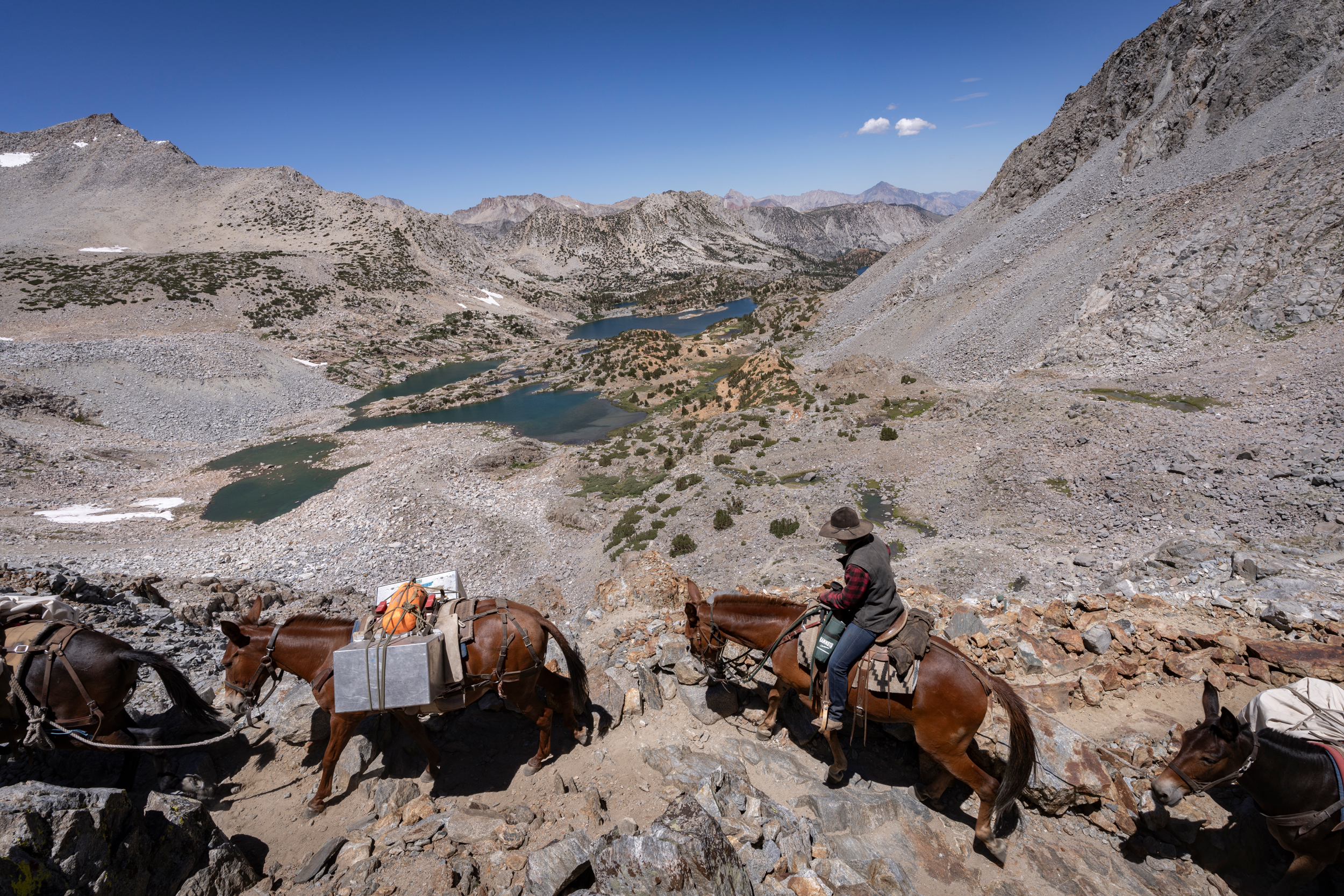
Even in cases where animals can themselves relocate fairly easily, they would still be constrained by the availability of habitats suitable for them to survive and thrive. “We’re going to start seeing species blink out at the southern edges of their ranges” faster than the species can move to keep up with the climate, Parks said.
And when alternative habitats for a species exist within its migration range, they may still have difficulty accessing them.
“Just because an area is going to be climatically suitable in the future for a species doesn’t mean the species can get there,” said Parks. This is why habitat connectivity is so crucial for biodiversity conservation.
Trapped on mountaintops, alpine wildlife are especially threatened by climate change, both by the lack of anywhere higher and colder in which they can find a climate refuge, and by the destruction of their habitats on summits. The many American pika, mouse-like relatives of rabbits that I saw scuttling in and out of the scree along the trail, is the oft-cited poster child for this climate-driven predicament, despite somehow evading any endangered species listings. In the absence of any conservation action, even their conspicuous cuteness won’t save them from extinction in some areas by the turn of the century.
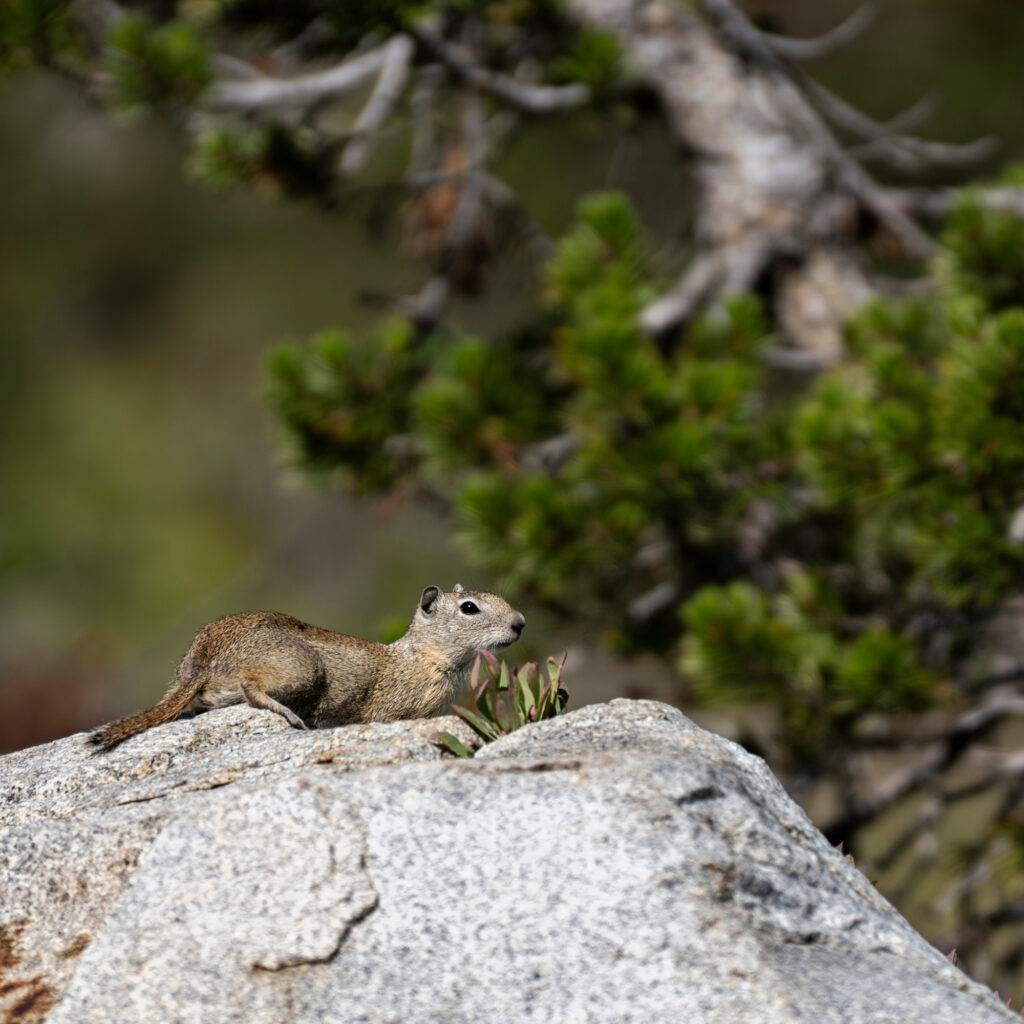
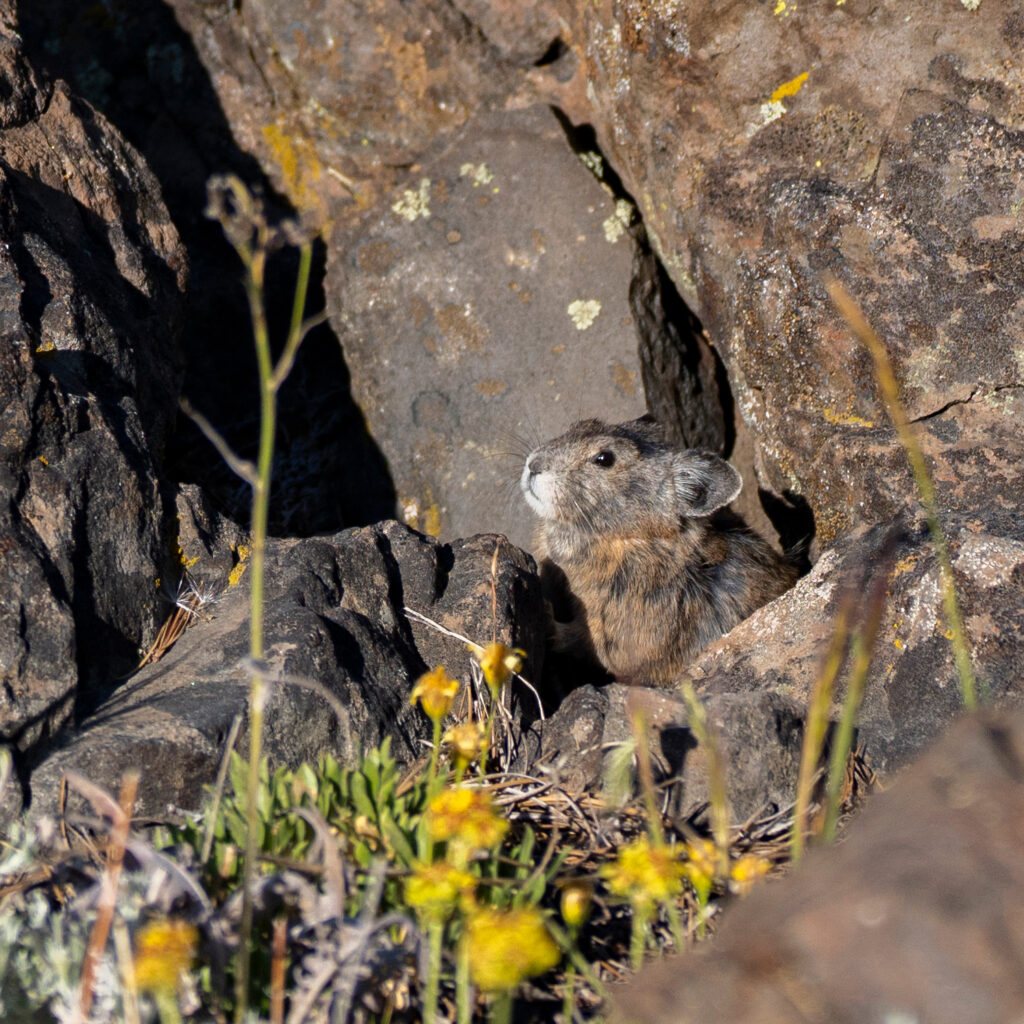
Rising temperatures, like the heatwaves obliterating the world’s coral reefs, are annihilating plants and animals around the planet. But even wildlife that isn’t directly at risk from rising temperatures is being impacted by global warming. The increasing frequency and severity of climate-related disturbances to a habitat affects all the species that rely on that ecosystem.
“The forests in California and elsewhere are basically under assault on multiple fronts,” Parks said. “There’s a lot of intersections between climate, fire and wildlife. You’ve just been hiking through these areas that were burnt to a crisp. Where are the spotted owls going to go?”
Riffing on my fire triangle lessons with Hugh Safford several weeks ago, Parks described how you could also create a “wildlife triangle,” where species persistence is determined by the interaction of habitat, climate and disturbance. “I’m just making this up on the fly, but it’s a way to think about it, right?” he said. We vowed to collaborate on a scientific publication and eventual press release stemming from this insight.
Perhaps that reflects another type of trail magic, one that could help confront the challenges of climate change. What if the vulnerability, human diversity and close connections of the long-distance hiking experience could also foster solutions to big environmental issues in the way communities come together to assist thirsty, hungry, weary hikers? “Climate angels,” working like “trail angels,” would be a force to be reckoned with.
Perhaps that idea is just the Panglossian bliss of finishing my hike on one of the nation’s most spectacular summits, but others have found that people from opposite sides of the social and political spectrum—who would never even talk to one another in the civilized world, much less collaborate—can walk and work side-by-side when they’re on an adventure in the wilderness.
“We are all better people out there, period, end of story. So much of the things we worry about when we’re in our daily city life just completely fall aside,” said Scout. “And we talk about stuff that matters. You could be a die-hard political opposite and vehement about it, and you and I would get along out there.”
Ultimately, change happens one publication, policy, program and person at a time, and compounds when people come together. “I do it because I’m not alone,” Scout said, when explaining why he’d spend up to 40 hours a week volunteering in the service of the national trails system.
But we’ll need a lot more Scouts to deal with the threats to wilderness, biodiversity and the climate. Ironically, the more we learn about nature’s role in maintaining the soundness of our bodies and the sanity of our minds, the less of it remains for us to enjoy.
Short of fixing the planetary crisis, I seek to shed light on all that we have lost and everything else we stand to lose. And after close to 3,000 miles hiking through some of the most beautiful landscapes in the world, I can say that the answer to both is, “a lot.”
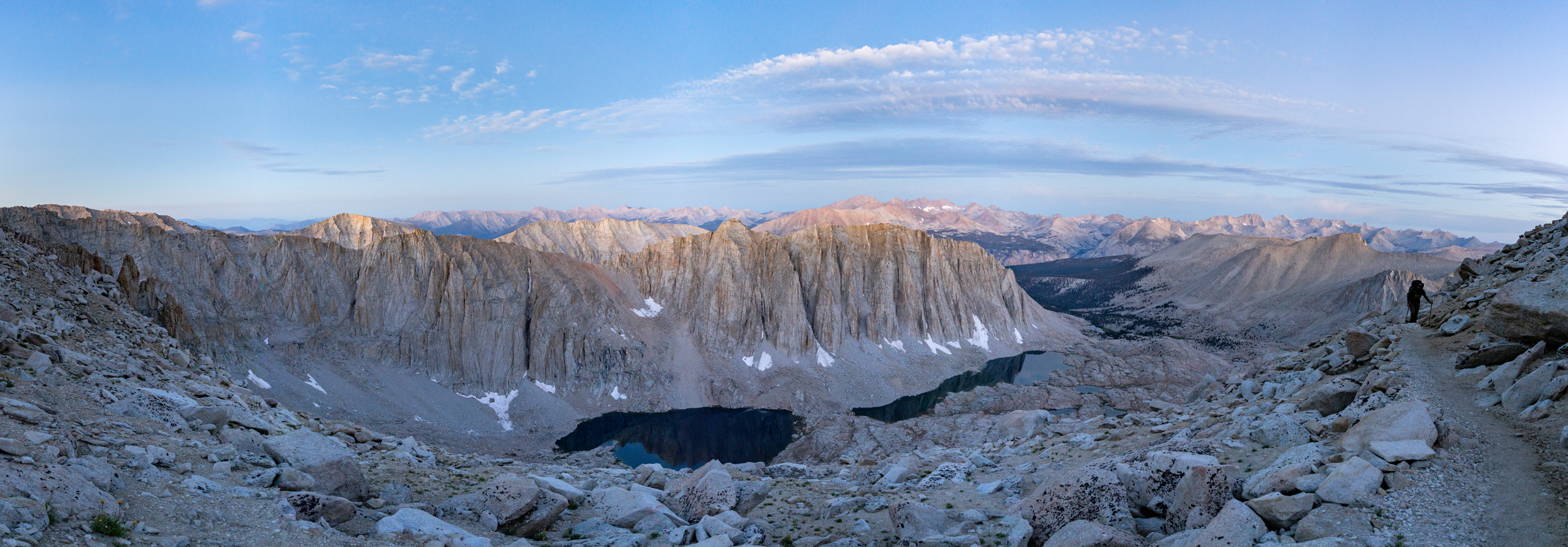
About This Story
Perhaps you noticed: This story, like all the news we publish, is free to read. That’s because Inside Climate News is a 501c3 nonprofit organization. We do not charge a subscription fee, lock our news behind a paywall, or clutter our website with ads. We make our news on climate and the environment freely available to you and anyone who wants it.
That’s not all. We also share our news for free with scores of other media organizations around the country. Many of them can’t afford to do environmental journalism of their own. We’ve built bureaus from coast to coast to report local stories, collaborate with local newsrooms and co-publish articles so that this vital work is shared as widely as possible.
Two of us launched ICN in 2007. Six years later we earned a Pulitzer Prize for National Reporting, and now we run the oldest and largest dedicated climate newsroom in the nation. We tell the story in all its complexity. We hold polluters accountable. We expose environmental injustice. We debunk misinformation. We scrutinize solutions and inspire action.
Donations from readers like you fund every aspect of what we do. If you don’t already, will you support our ongoing work, our reporting on the biggest crisis facing our planet, and help us reach even more readers in more places?
Please take a moment to make a tax-deductible donation. Every one of them makes a difference.
Thank you,
David Sassoon
Founder and Publisher
Vernon Loeb
Executive Editor
Share this article
Disclaimer: The copyright of this article belongs to the original author. Reposting this article is solely for the purpose of information dissemination and does not constitute any investment advice. If there is any infringement, please contact us immediately. We will make corrections or deletions as necessary. Thank you.
Title:Can the ‘Magic’ and ‘Angels’ that Make Long Trails Mystical for Hikers Also Conjure Solutions to Environmental Challenges?
Url:https://www.investsfocus.com



